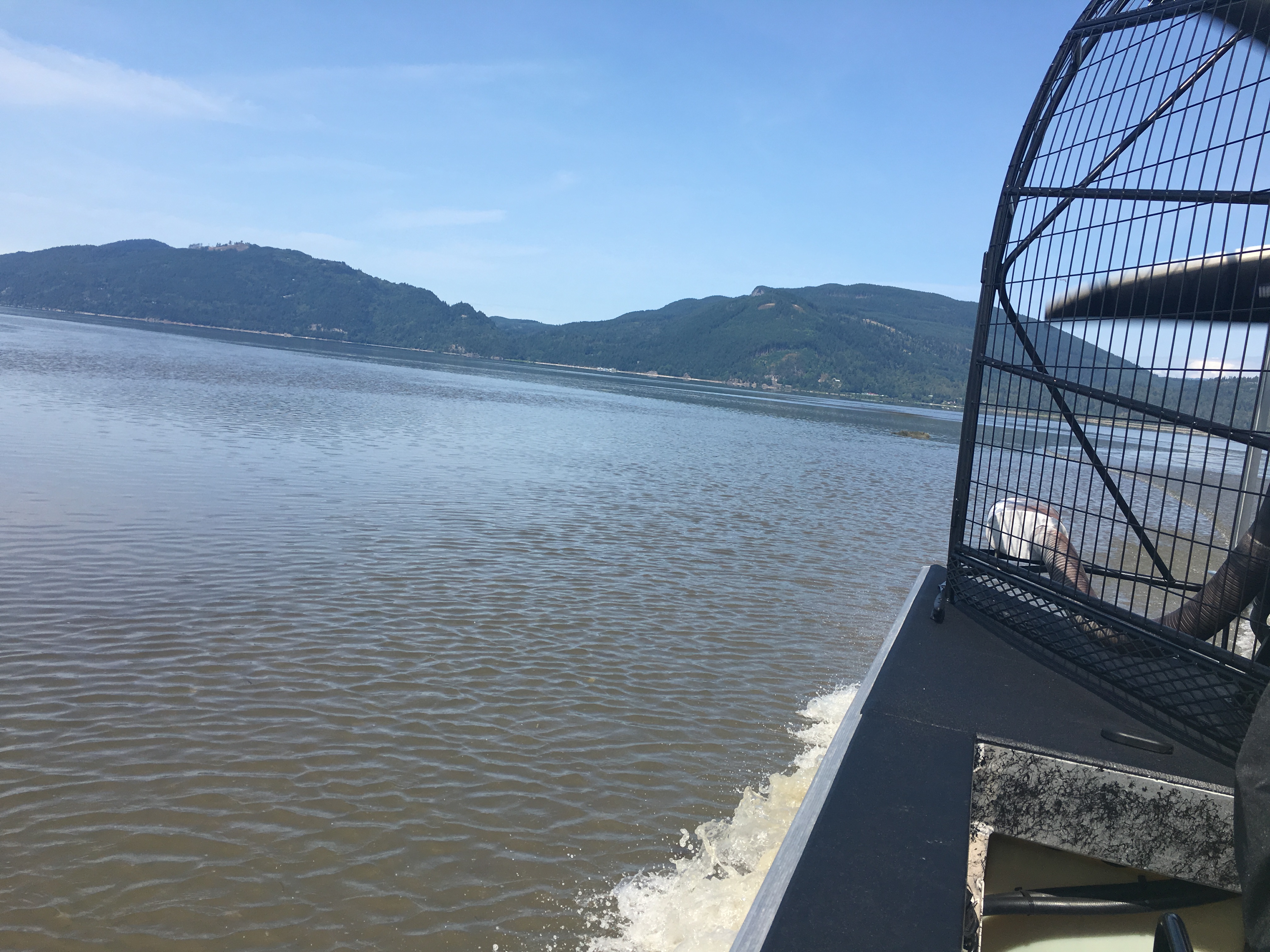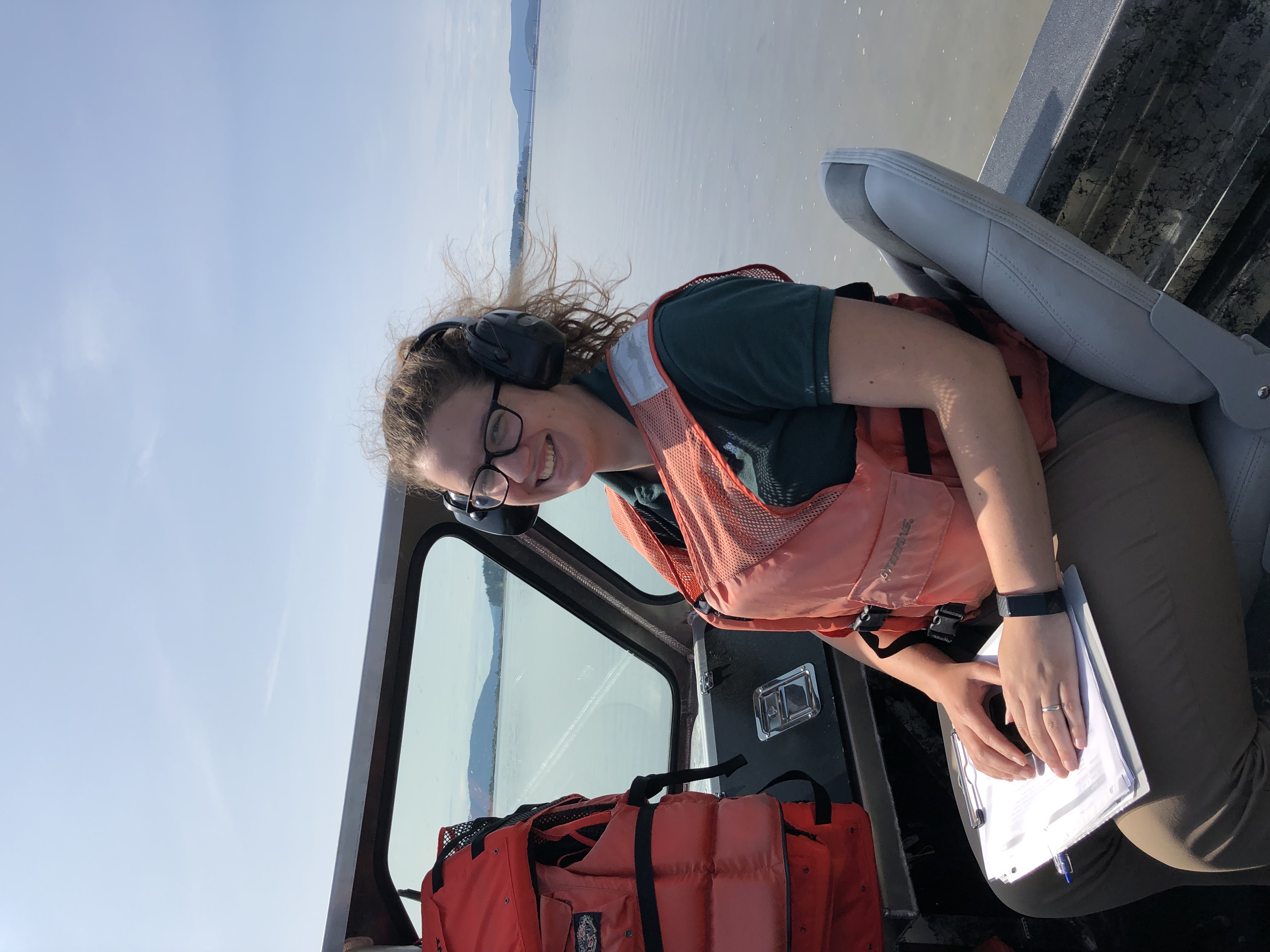
The state of Washington can now get closer to oil spills using the power of air.
The Washington Department of Fish and Wildlife (WDFW), using a grant from the Department of Ecology, bought an airboat to access shallow and hard-to-reach areas for their aquatic weed management program and for oil spill response when needed. The Ecology grant also funded advanced training for the WDFW airboat operators.
“This is solving two problems at once,” said Darcy Bird, Oil Spill Preparedness Planner for the Department of Ecology. “Fish and Wildlife needed an airboat and we need airboat capability in the event of an oil spill. This helps both our departments.” Ecology Spills Program staff, Darcy Bird, rides on the airboat, gathering information for Geographic Response Plans.
Bird reviews contingency plans and geographic response plans, known as GRPs. The plans guide responses to oil spills. GRPs set out strategies tailored to specific locations at risk of oil spills. The strategies are designed to minimize impacts to sensitive environmental, cultural, and economic resources.
At the end of July, Bird, a staff member of the WDFW Oil Spill Team, and a representative of an oil spill primary response contractor used the new craft to evaluate areas around Samish Bay, north of Anacortes and south of Bellingham. The area has a number of sensitive resources that may need protection during an oil spill.
“Samish Bay is so unique,” said Bird. “I’ve never had the opportunity to see eelgrass beds that closely. With a typical boat, you can’t go into eelgrass beds because it will harm the bed and damage the boat propeller, but the airboat glides over everything effortlessly.”
The boat operates in water, little water, or no water at all. Bird was able to use the airboat to evaluate some of the GRP strategies and the logistics of deploying them. Most of the strategies were confirmed, although a couple of the sites were hard to access, leading Ecology to reevaluate strategies in those areas.
For spill responses, the airboat can be used to rapidly move staff into difficult-to-access areas to do site assessments, sampling efforts, and even wildlife operations. “Now that we did this, we can also go to other shallow environments in places like Grays Harbor and Willapa Bay to conduct the same GRP work,” said Bird. “Collaboration is a big focus when updating geographic response plans and we all work together to make sure these plans are protective of the resources we have in the state.”
The WDFW airboat gliding along the shore and water.
For more information on geographic response plans and oil spills, visit our Oil Spills 101 webpage, which has all the state’s geographic response plans and contact information.
Ecology provides equipment and training grants – such as the grant used to purchase the airboat – to help local communities and other organizations prepare for and respond to spills. For more information on grants and the application process, visit our website.


